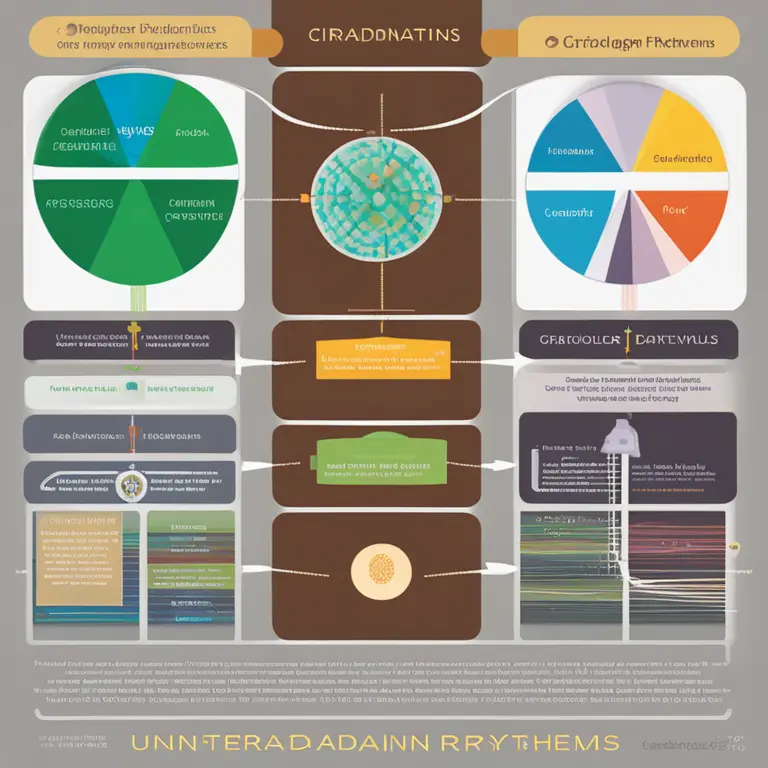
Biorhythms and Circadian Rhythms: The Intricate Connection
The article dives into the relationship between biorhythms and circadian rhythms, revealing how these biological patterns influence our daily lives.
article by Adrian Wallace
The Essence of Biorhythms
Biorhythms, a concept originating in the early 20th century, postulate that our lives are governed by natural biological cycles. These cycles, often broken down into physical, emotional, and intellectual components, are thought to influence our abilities, moods, and performance levels. Although regarded with skepticism by the scientific community, biorhythms have captivated the interest of enthusiasts who believe these patterns can be calibrated to optimize wellbeing. Each cycle has a unique wave-like pattern, duration, and proposed impact on personal vitality and disposition.

Understanding Circadian Rhythms
Unlike biorhythms, circadian rhythms have a firm grounding in science and are known to regulate our 24-hour biological clock. Governed by the suprachiasmatic nucleus in the brain, these rhythms respond primarily to light and darkness, influencing sleep patterns, feeding behaviors, hormone release, and other bodily functions. Accurate coordination of circadian rhythms is crucial for maintaining optimal health, facilitating recovery, and ensuring the functionality of various physiological processes.

Distinguishing Biorhythms from Circadian Rhythms
While both biorhythms and circadian rhythms deal with time-based patterns in the body, their scopes and acceptance in science differ markedly. Biorhythms encompass a holistic, albeit speculative approach, suggesting a predestined cycle rhythmically impacting a person's life. In contrast, circadian rhythms have measurable biological underpinnings crucial for survival. The most apparent difference is their time frames: biorhythms advocate cycles lasting days to weeks, while circadian rhythms follow a strict 24-hour cycle synchronized with the Earth’s rotation.

Intersecting Pathways of Biorhythms and Circadian Rhythms
Could these two distinct concepts of biological timing interact? This question resides at the heart of curious intersections. Circadian rhythms might play a role in the modulation of mood, energy, and cognition—areas where biorhythm theory suggests influence. Yet, no reliable evidence supports that biorhythms interact with or influence circadian regulatory mechanisms. The intriguing prospect of synchronization between these biological cycles remains an area for future exploration and discovery.

Chronobiology and Biorhythmic Research
As the study of biological rhythms, chronobiology encompasses research on circadian rhythms and other cycles, such as ultradian and infradian rhythms. The field has yet to embrace biorhythms fully due to a lack of empirical evidence. However, with advancements in chronobiological research, we might yield new tools that can either validate or refute biorhythmic patterns. Regardless of biorhythms’ scientific standing, many people continue to use them as a self-help tool, trying to align their activities with perceived optimal times.
The Practical Implications of Biological Rhythms
If the connection between biorhythms and circadian rhythms were to be substantiated, it could revolutionize our approach to health and productivity. Presently, circadian research informs practical applications like the design of shift work schedules, light therapy for seasonal affective disorders, and timing for medication delivery. Biorhythms could potentially add another layer to personalized healthcare and well-being if their validity is established or if they provide a psychological framework for personal organization and stress management.
Concluding Thoughts on Biorhythmic and Circadian Correlation
The detailed relationship between biorhythms and circadian rhythms remains largely speculative and an avenue for further investigation. Circadian rhythms remain an essential component of human physiology, while the concept of biorhythms provides an appealing, albeit unproven, personal blueprint for navigating life's challenges. Recognizing the distinct boundaries and current scientific understanding of each concept is essential as we look toward an era that promises deeper insight into human biological timing.
Published: 1/30/2024
Modified: 1/30/2024
More predictions
Come back here soon to learn more about yourself and your future


The Rhythms Within: An Insight into Biorhythms
Discover the science and philosophy behind biorhythms, the cyclical patterns our bodies follow, in connection with our physical, emotional, and intellectual states.


Biorhythm Compatibility: Sync Your Cycles for Harmony
Discover the intriguing connection between biorhythms and relationship harmony. Learn how syncing your biological cycles can foster deeper compatibility.


The Rhythms Concept: A Guide to Biorhythms
Discover the intriguing concept of biorhythms: the cyclic patterns influencing our physical, emotional, and intellectual states.